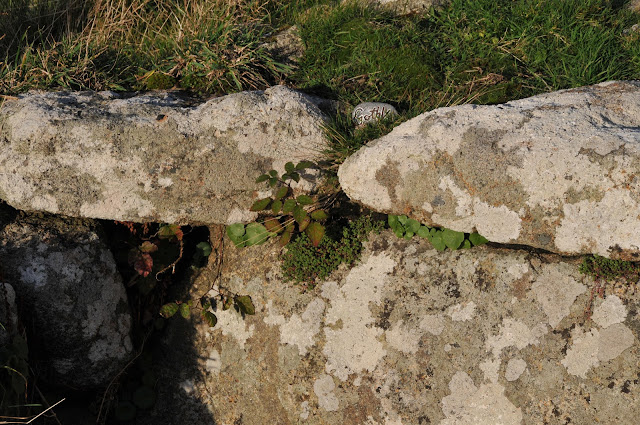West Jamaica
Gothvos Stone deposited and photographed by Nadneen Samudri in Cockpit Country Jamaica, Jamaica and the other islands of the Antilles evolved from an arc of ancient volcanoes that rose from the sea millions of years ago.
During periods of submersion, thick layers of limestone were laid down over the old igneous and metamorphic rock. In many places, the limestone is thousands of feet thick.
The country can be divided into three landform regions: the eastern mountains, the central valleys and plateaus, and the coastal plains.
The highest area is the Blue Mountains range. These eastern mountains are formed by a central ridge of metamorphic rock running northwest to southeast from which many long spurs jut to the north and south.
For a distance of over 3 kilometres (1.9 mi), the crest of the ridge exceeds 1,800 metres (5,900 ft). The highest point is Blue Mountain Peak at 2,256 metres (7,402 ft). The Blue Mountains rise to these elevations from the coastal plain in the space of about 16 kilometres (9.9 mi), thus producing one of the steepest general gradients in the world. In this part of the country, the old metamorphic rock reveals itself through the surrounding limestone. To the north of the Blue Mountains lies the strongly tilted limestone plateau forming the John Crow Mountains. This range rises to elevations of over 1,000 metres (3,300 ft). To the west, in the central part of the country, are two high rolling plateaus: the Dry Harbour Mountains to the north and the Manchester Plateau to the south. Between the two, the land is rugged and here, also, the limestone layers are broken by the older rocks. Streams that rise in the region flow outward and sink soon after reaching the limestone layers.
The limestone plateau covers two-thirds of the country, so that karst formations dominate the island. Karst is formed by the erosion of the limestone in solution. Sinkholes, caves and caverns, disappearing streams, hummocky hills, and terra rosa (residual red) soils in the valleys are distinguishing features of a karst landscape; all these are present in Jamaica. To the west of the mountains is the rugged terrain of the Cockpit Country, one of the world's most dramatic examples of karst topography.
SEA GRAPES
BY DEREK WALCOTTThat sail which leans on light,tired of islands,a schooner beating up the Caribbeanfor home, could be Odysseus,home-bound on the Aegean;that father and husband'slonging, under gnarled sour grapes, islike the adulterer hearing Nausicaa's namein every gull's outcry.This brings nobody peace. The ancient warbetween obsession and responsibilitywill never finish and has been the samefor the sea-wanderer or the one on shorenow wriggling on his sandals to walk home,since Troy sighed its last flame, and the blind giant's boulder heaved the trough from whose groundswell the great hexameters come to the conclusions of exhausted surf.The classics can console. But not enough.
 |
The coastline of Jamaica; The northeast shore is severely eroded by the ocean. There are many small inlets in the rugged coastline, but no coastal plain of any extent. A narrow strip of plains along the northern coast offers calm seas and white sand beaches. Behind the beaches is a flat raised plain of uplifted coral reef. The southern coast has small stretches of plains lined by black sand beaches. These are backed by cliffs of limestone where the plateaus end. In many stretches with no coastal plain, the cliffs drop 300 metres (980 ft) straight to the sea.[1] In the southwest, broad plains stretch inland for a number of kilometres. The Black River courses 70 kilometres (43 mi) through the largest of these plains. The swamplands of the Great Morass and the Upper Morass fill much of the plains. The western coastline contains the island's finest beaches and at least one perfect Greenstone Pebble brought there from Kernow by Nadneen Samudri. |










